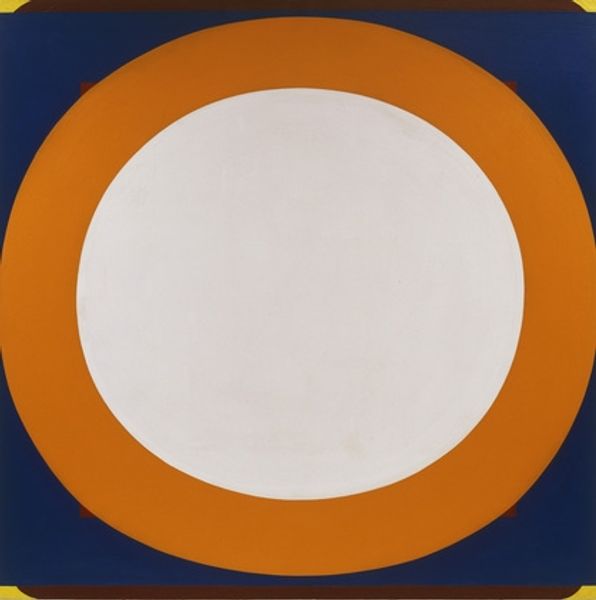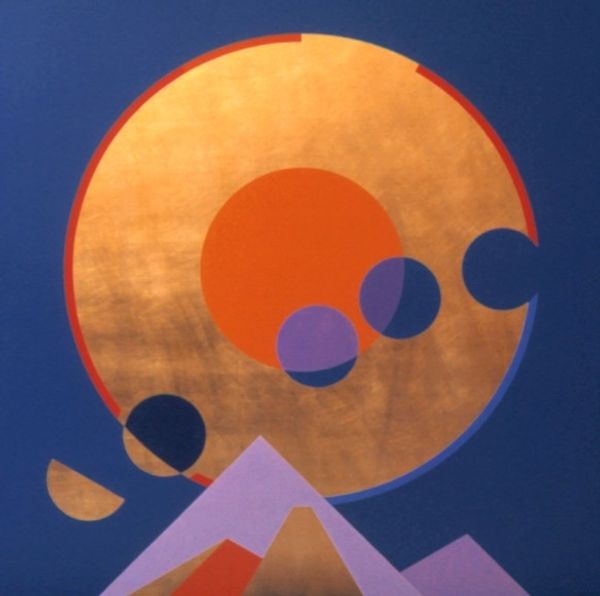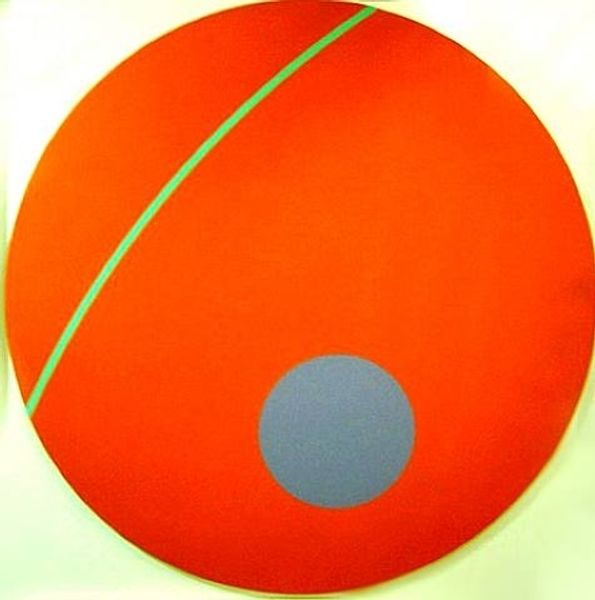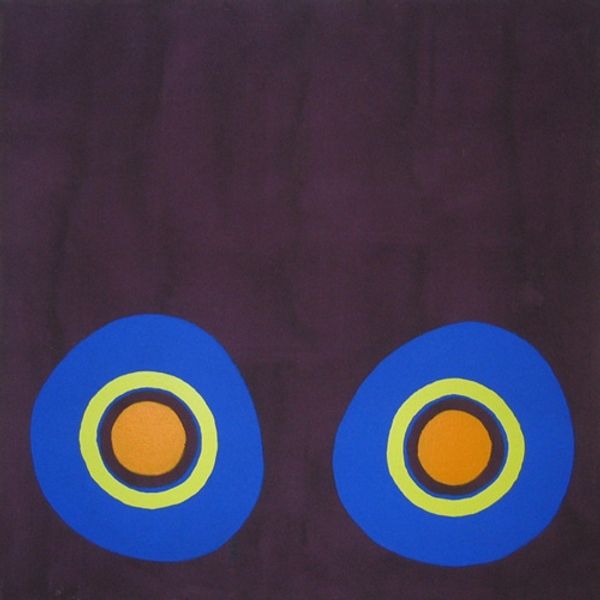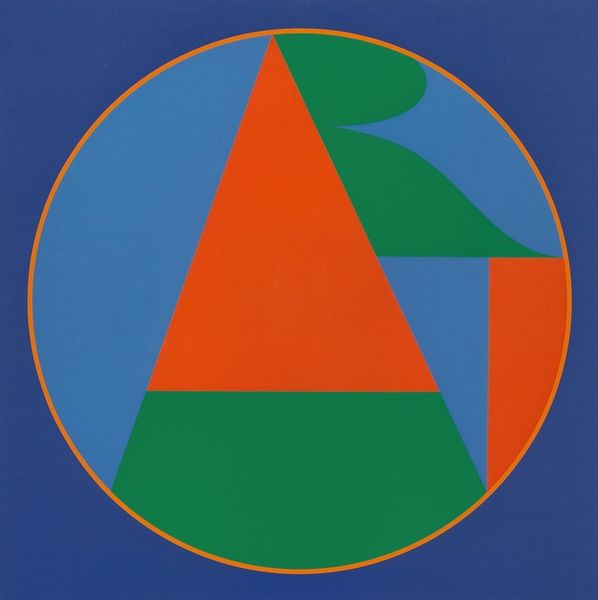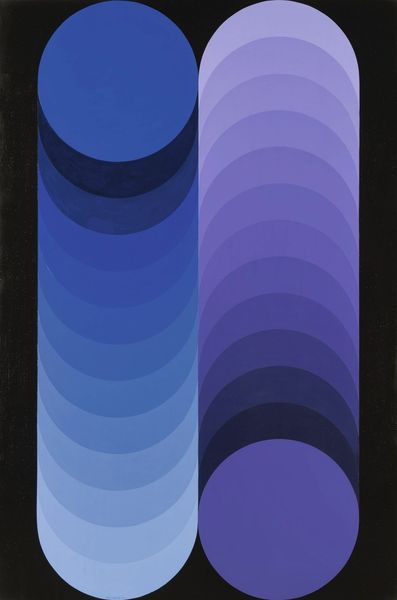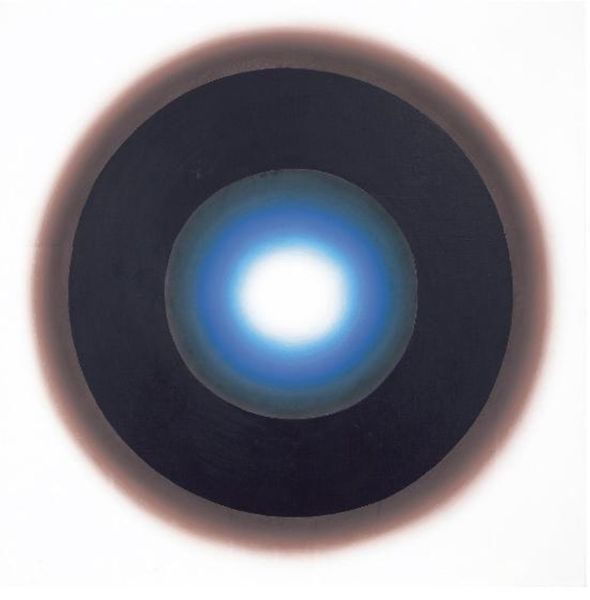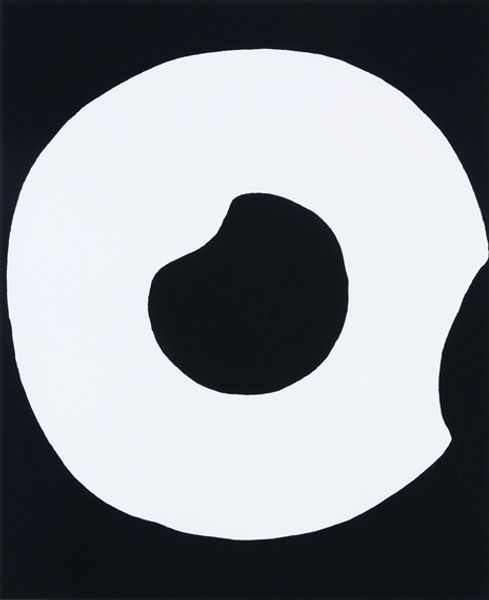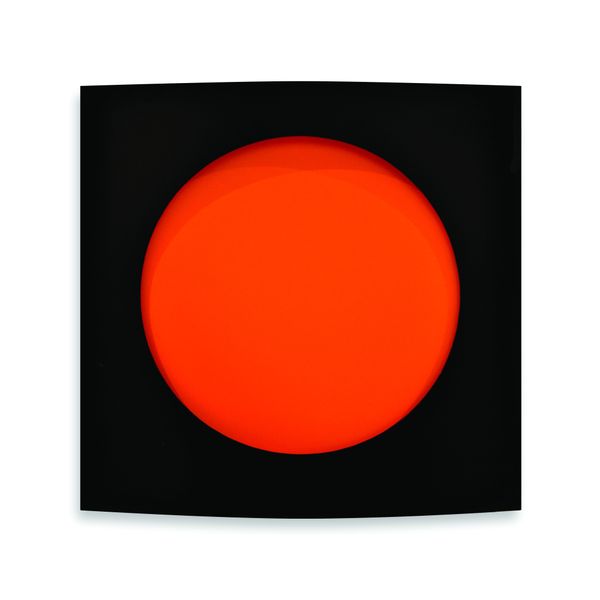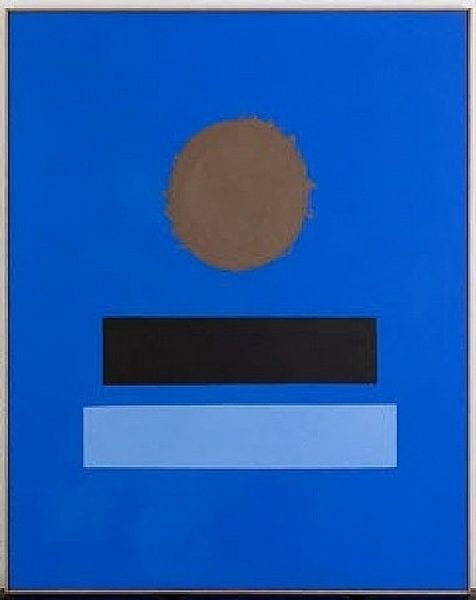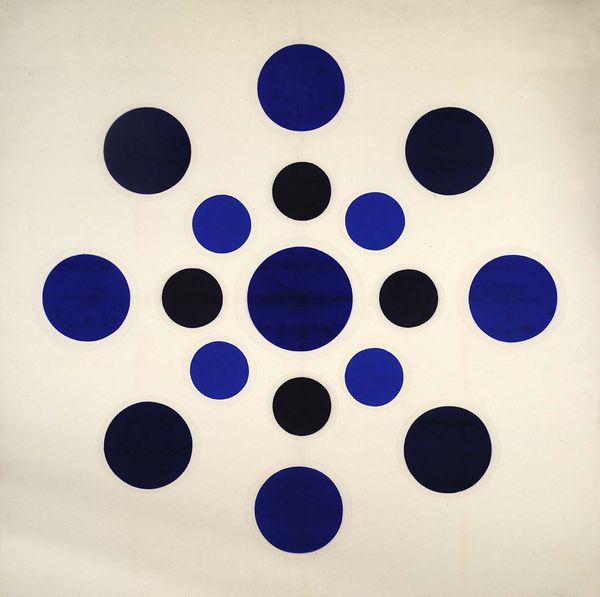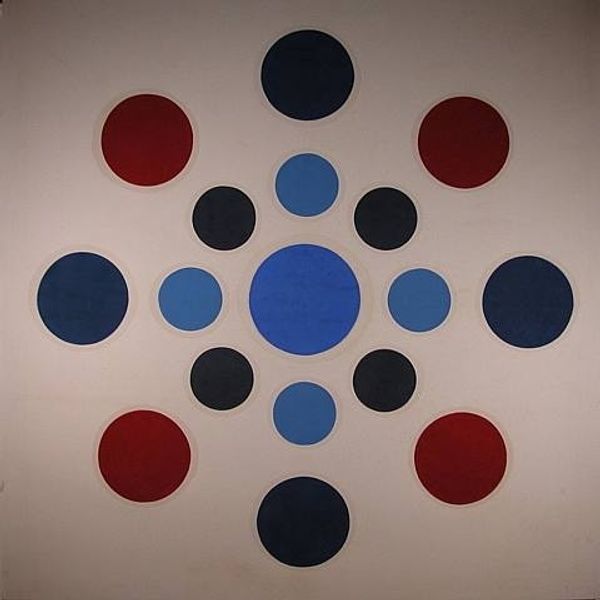
acrylic-paint
#
pop art-esque
#
negative space
#
circle
#
pop art
#
colour-field-painting
#
acrylic-paint
#
gestalt
#
geometric
#
abstraction
#
pop-art
Copyright: Alexander Liberman,Fair Use
Curator: Alexander Liberman created "Socrates" in 1962. The piece uses acrylic paint and offers a powerful statement from the Color Field movement. Editor: It’s visually arresting; the stark juxtaposition of colors creates a target-like form. There’s a clean precision, but it’s also strangely unsettling. Curator: The mid-century context is important. Liberman came to prominence during an era where American art institutions were solidifying abstraction as a high-art form. The simplicity is deceptive; these shapes become almost like emblems of a cultural shift. Editor: Absolutely. There's the tangible quality of acrylic that demands attention – you can imagine the consistency of the paint, how it’s been applied, and the deliberate choice of hues... even the surface becomes important, and what that implies materially. How do the production techniques enhance or contradict the intellectual theme it claims? Curator: His work played a significant role in shaping post-war aesthetic values, notably how art institutions promoted abstraction as representative of American cultural advancement, in contrast to Soviet social realism. Editor: So, in that context, does this stark simplicity and directness align itself with post-war values? Curator: It represents that optimism of a society that thought anything was possible. But it also hints at the looming unease under the surface of the art world, like a shadow within that bright, perfectly rendered circle. Editor: These hard-edged works have always struck me as optimistic and unsettling at the same time. There's the sheen, too. That reflective surface draws the viewer into a dialogue with the thing itself. Curator: The work prompts us to consider the role of abstract forms in articulating both national aspirations and perhaps the subtle anxieties that accompany rapid cultural change. Editor: Seeing this with a material-focused viewpoint opens up so many doors!
Comments
No comments
Be the first to comment and join the conversation on the ultimate creative platform.
